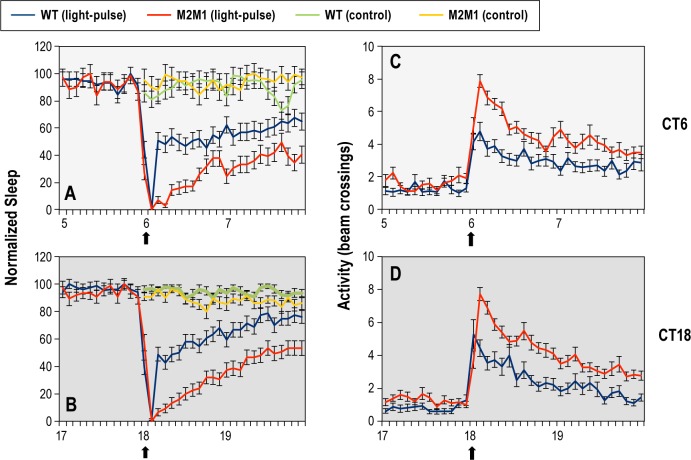Figure 5.
Prolonged wakefulness in flies with high dmpi8 splicing efficiency following brief light stimulation. (A-D) Flies were at kept 18°C in LD for 5 days and subsequently placed in DD. During the first 3 days of DD, flies were exposed to 5 min of light at either CT6 or CT18 (as indicated by vertical arrows and right of panels) and returned to the dark; a third group served as non-treated controls. From the collected activity recordings we generated graphs that show either sleep (A,B) or locomotor activity; i.e., beam-crossings (C,D). Results are only shown for female flies but similar findings were obtained with male flies (data not shown). (A,B) Shown are normalized group averages of total sleep for light-pulsed p{dmper/8:8} (WT; blue line) or p{dmper/M2M1} (red line) flies; also shown are the control values, beginning at either CT6 or CT18, for flies that were not exposed to light-pulses; p{dmper/8:8} (WT; green line) or p{dmper/ M2M1} (yellow line) flies. To facilitate comparison (especially at ZT6), the highest value for total sleep prior to the light treatment was set to 100 and all other values were normalized. (C,D) Shown are group averages of activity levels for light-pulsed p{dmper/8:8} (WT) (blue line) or p{dmper/M2M1} (red line) flies. For each value shown, data from at least 16 flies were used to generate the sleep and activity profiles shown.

